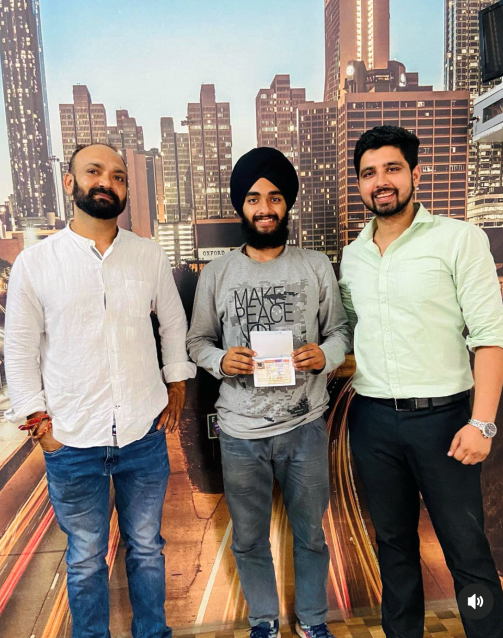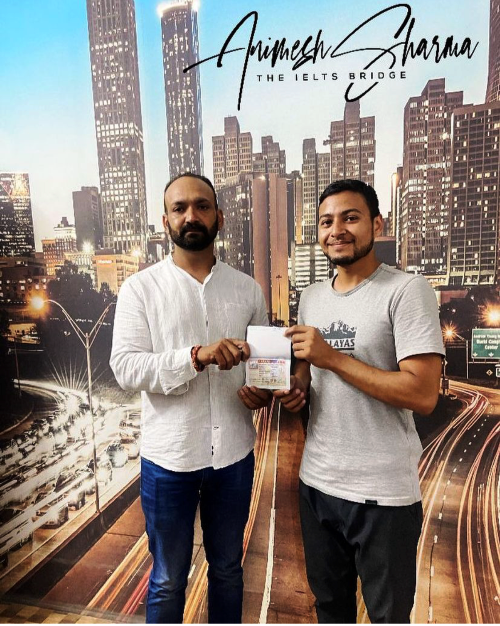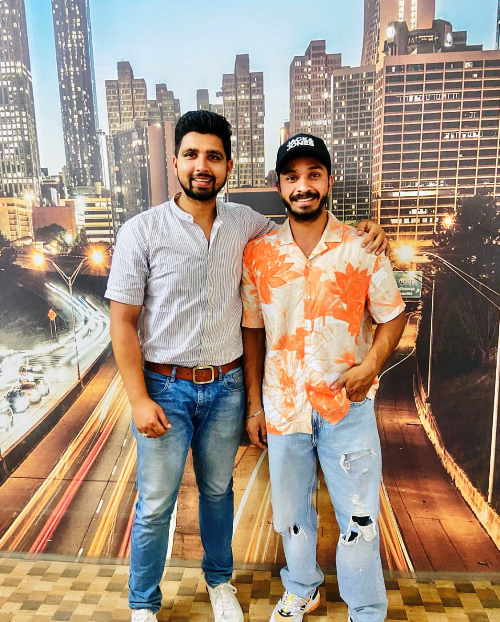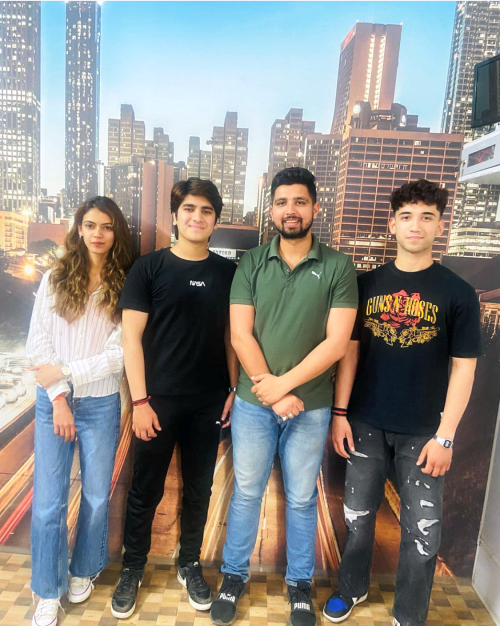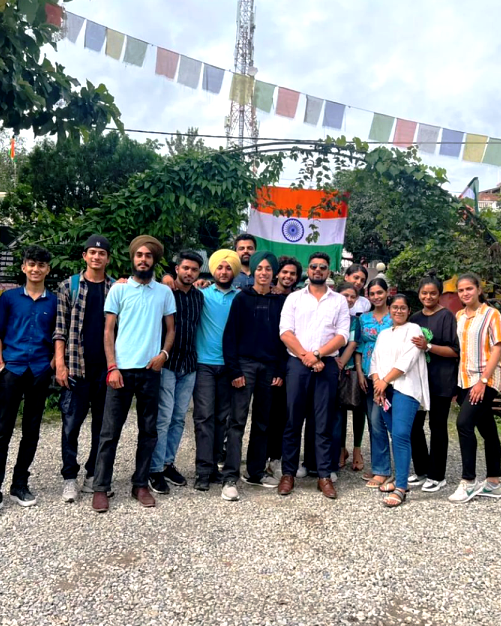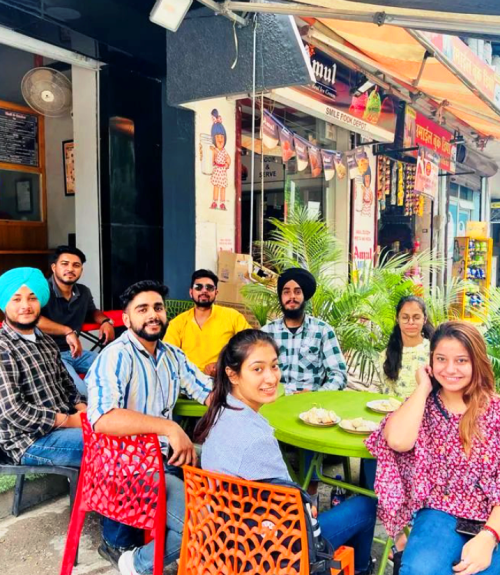Reading Passage 1: Matching statements with the correct location
[The rules for finding answers to this sort of question are simple. Just find the keywords and read around different locations carefully. Then, give a quick look to check whether there is another statement or idea provided by the same nationality in the text. If there is, check the reference carefully and decide your answer. Remember, the questions may not follow any sequential order.]
Question no. 1: Manufacturers must sell cleaner cars.
Keywords for the question: manufacturers, must sell, cleaner cars,
Lines 2-3 of paragraph B say, “ . … . In Los Angeles, state regulations are forcing manufacturers to try to sell ever cleaner cars, . .. ..”
Here, state regulations are forcing = must,
So, the answer is: Los Angeles
Question no. 2: Authorities want to have power to enforce anti-pollution laws.
Keywords for the question: authorities, power, enforce, anti-pollution laws,
Again, in paragraph B, take a look at lines 4-5, where the author of the text writes, “ .. . Local authorities in London are campaigning to be allowed to enforce anti-pollution laws themselves; .. .. .”
Here, campaigning to be allowed = want to have power,
So, the answer is: London
Question no. 3: Drivers will be charged according to the roads they use.
Keywords for the question: drivers, charged, roads they use,
The answer to this question can be found in paragraph F in lines 3-4, “ . .. . Singapore is advancing in this direction, with a city-wide network of transmitters to collect information and charge drivers as they pass certain points. .. ..”
Here, charge drivers = drivers will be charged, they pass certain points = roads they use,
So, the answer is: Singapore
Question no. 4: Moving vehicles will be monitored for their exhaust emissions.
Keywords for the question: moving vehicles, monitored, exhaust emissions,
In paragraph D, the first lines say, “As part of a European Union environmental programme, a London council is resting an infra-red spectrometer from the University of Denver in Colorado. It gauges the pollution from a passing vehicle .. .. .”
Here, gauges = monitored, pollution = exhaust emissions,
So, the answer is: London
Question no. 5: Commuters are encouraged to share their vehicles with others.
Keywords for the question: commuters, encouraged, share, vehicles, others,
Paragraph E talks about sharing vehicles with others. Here, take a look at lines 2-4, “ . .. . Los Angeles has some of the world’s cleanest cars – far better than those of Europe – but the total number of miles those cars drive continues to grow. One solution is car-pooling, an arrangement in which a number of people who share the same destination share the use of one car. .. ..”
Here, car-pooling = share vehicles with others,
So, the answer is: Los Angeles
Question 6-10: YES, NO, NOT GIVEN:
In this type of question, candidates are asked to find out whether:
The statement in the question matches with the claim of the writer in the text- YES
The statement in the question contradicts with the claim of the writer in the text- NO
The statement in the question has no clear connection with the account in the text- NOT GIVEN
[TIPS: For this type of question, you can divide each statement into three independent pieces and make your way through with the answer.]
Question no. 6: According to British research, a mere twelve per cent of vehicles tested produced over fifty percent of total pollution produced by the sample group.
Keywords for the question: British research, twelve per cent, tested, produced, over fifty percent, pollution, by the sample group,
Have a close look at the first few lines in paragraph C, “When Britain’s Royal Automobile Club monitored the exhausts of 60,000 vehicles, it found that 12 per cent of them produced more than half the total pollution .. .. .”
Here, more than half = over fifty percent,
So, the answer is: YES
Question no. 7: It is currently possible to measure the pollution coming from individual vehicles whilst they are moving.
Keywords for the question: currently, possible, measure, pollution, individual vehicles, whilst, moving,
The first half of paragraph D says, “As part of a European Union environmental programme, a London council is resting an infra-red spectrometer from the University of Denver in Colorado. It gauges the pollution from a passing vehicle – .. .. ..”
Here, passing vehicle = individual vehicles whilst they are moving, gauges the pollution = measure the pollution,
So, the answer is: YES
Question no. 8: Residents of Los Angeles are now tending to reduce the yearly distances they travel by car.
Keywords for the question: Residents, Los Angeles, now, tending, reduce, yearly distances, travel by car,
In paragraph E, lines 2-3 say, “ .. .. Los Angeles has some of the world’s cleanest cars – far better than those of Europe – but the total number of miles those cars drive continues to grow. .. ..”
Here, total number of miles those cars drive = yearly distances they travel by car, continues to grow = tending NOT to reduce,
So, the answer is: NO
Question no. 9: Car-pooling has steadily become more popular in Los Angeles in recent years.
Keywords for the question: Car-pooling, steadily become, more popular, Los Angeles, recent years,
Lines 3-6 of paragraph E say, “ . . .. . One solution is car-pooling, an arrangement in which a number of people who share the same destination share the use of one car. However, the average number of people in o car on the freeway in Los Angeles, which is 1.0, has been falling steadily. …”
Here, has been falling steadily = has steadily become LESS poplar,
So, the answer is: NO
Question no. 10: Charging drivers for entering certain parts of the city has been successfully done in Cambridge, England.
Keywords for the question: charging drivers, entering certain parts of the city, successfully done, Cambridge, England,
In paragraph F, the final lines say, “ . . . .. Singapore is advancing in this direction, with a city-wide network of transmitters to collect information and charge drivers as they pass certain points. Such road-pricing, however, can be controversial. When the local government in Cambridge, England, considered introducing Singaporean techniques, it faced vocal and ultimately successful opposition.”
Here, successful opposition = has NOT been done successfully,
So, the answer is: NO
Question 11-13: Multiple choice questions
[This type of question asks you to choose a suitable answer from the options using the knowledge you gained from the passage. Generally, this question is set found as the last question set in most passages so you should not worry much about it. Finding all the answers for previous questions gives you a good idea about these questions.]
Question no. 11: How many pollutants currently exceed WHO guidelines in all megacities studied?
Keywords for the question: how many, pollutants, currently exceed, WHO guidelines, all megacities, studied,
The answer can be found in Part Two, in the first paragraph. In line no. 4, the writer says, “ . . . . -already exceeded the level the WHO deems healthy in at least one major pollutant. .. .”
Here, WHO deems healthy = WHO guidelines,
So, the answer is: A (one)
Question no. 12: Which pollutant is currently the subject of urgent research?
Keywords for the question: pollutant, currently, subject, urgent research,
In Part Two, the first and final lines of paragraph no. 2 say, “Of the six pollutants monitored by the WHO – carbon dioxide, nitrogen dioxide, ozone, sulphur dioxide, lead and particulate matter – it is this last category that is attracting the most attention from health researchers. . .. .. . Research being conducted in two counties of Southern California is reaching similarly disturbing conclusions concerning this little- understood pollutant.
Here, attracting the most attention from health researchers = subject of urgent research,
So, the answer is: D (particulate matter)
Question no. 13: Which of the following groups of people are the most severely affected by intense air pollution?
Keywords for the question: groups of people, most severely affected, intense air pollution,
In Part Two, lines 3-4 of paragraph no. 3 say, “ . . .. . . The old and ill, however, are the most vulnerable to the acute effects of heavily polluted stagnant air.
Here, most vulnerable = most severely affected, heavily polluted stagnant air = intense air pollution, So, the answer is: C (the old and ill)
Reading Passage 2: VOTES FOR WOMEN
Questions 14-15: Multiple choice questions
[This type of question asks you to choose a suitable answer from the options using the knowledge you gained from the passage. Generally, this question is set found as the last question set in most passages so you should not worry much about it. Finding all the answers for previous questions gives you a good idea about these questions.]
Question no. 14: What is the main aspect of the suffragette movement’s work to which the exhibition at the Museum of London is devoted?
Keywords for the question: main aspect, suffragette movement’s work, exhibition, Museum of London, devoted,
We find reference to the Suffragette Movement in paragraph no. 1, “The suffragette movement, which campaigned for votes for women in the early twentieth century, is most commonly associated with the Pankhurst family and militant acts of varying degrees of violence. The Museum of
London has drawn on its archive collection to convey a fresh picture with its exhibition The Purple, White and Green: Suffragettes in London 1906-14.”
Then, in paragraph no. 2, the writer says, “The name is a reference to the colour scheme that the
Women’s Social and Political Union (WSPU) created to give the movement a uniform, nationwide image. By doing so, it became one of the first groups to project a corporate identity, . . .. ..”
Here, it became one of the first groups to project a corporate identity suggest that the main aspect was the success of the movement’s corporate image.
So, the answer is: C (the success of the movement’s corporate image)
Question no. 15: Why was the WSPU more successful than other suffrage groups?
Keywords for the question: why, WSPU, more successful, than, other suffrage groups,
The first few lines of paragraph no. 4 give us answer to this question as the writer says here, “With their slogan ‘Deeds not words’, and the introduction of the colour scheme, the WSPU soon brought the movement the cohesion and focus it had previously lacked. .. . ..”
Here, cohesion and focus = clear purpose and direction,
So, the answer is: D (It had a clear purpose and direction)
Question no. 16: Choosing TWO options from given list
[In this kind of question candidates have to choose two or three answers for each question from five or six options. The answers will not follow any sequential order as they are randomly spread in the text, so this question will be time-consuming. Skimming will come handy and previous reading of the text can come in use. Therefore, other questions should be done first before answering this question.]
In which TWO of the following years were laws passed allowing British women to vote?
Keywords for the question: TWO, years, laws, passed, allowing, British women, vote,
In lines 1-8 of the final paragraph, the author of the text writes, “Although the exhibition officially charts the years 1906 to 1914, graphic display boards outlining the bills of enfranchisement of 1918 and 1928, which gave the adult female populace of Britain the vote, show what was achieved. .. .. .”
Here, the bills of enfranchisement = laws that allows British women to vote,
So, the answers are:
D (1918)
E (1928)
Questions 17-19: Completing notes:
[In this type of question, candidates are asked to complete different notes with NO MORE THAN TWO WORDS from the passage. Keywords are important to find answers correctly. Generally, this type of question maintains a sequence. However, we should not be surprised if the sequence is not maintained. Find the keywords in the passage and you are most likely to find the answers.]
Question no. 17:
Three ways in which the WSPU raised money:
- the newspapers: mainly through selling 17. _________
Keywords for the question: three ways, WSPU, raised money, newspapers, mainly, selling,
Lines 1-8 in paragraph no. 6 mention, “Equally importantly for a rising political group, the newspaper returned a profit. This was partly because advertising space was bought in the paper by large department stores such as Selfridges, and jewellers such as Mappin & Webb.. .. . .”
Here, returned a profit = raised money,
So, the answer is: (selling) advertising (space)
Question no. 18:
- merchandising activities: selling a large variety of goods produced in their 18. _________
Keywords for the question: merchandising activities, selling, large variety of goods, produced in,
In paragraph no. 7 another way of raising money is mentioned in lines 1-10, “The creation of the colour scheme provided another money-making opportunity which the WSPU was quick to exploit. The group began to sell playing cards, board games, Christmas and greeting cards, and countless other goods, all in the purple, white and green colours. .. .. .”
Here, money-making opportunity = raised money, playing cards, board games, Christmas and greeting cards, and countless other goods = a large variety of goods,
So, the answer is: colour scheme / (three) colours / purple, white, (and) green
Question no. 19:
- additional fund-raising activities: for example, 19. _________
Keywords for the question: additional, fund-raising activities, for example,
Paragraph no. 8 has the answer to this question. The writer says here, in lines 1-10, “But the paper and merchandising activities alone did not provide sufficient funds for the WSPU to meet organisational costs, so numerous other fund-raising activities combined to fill the coffers of the ‘war chest’. The most notable of these was the Woman’s Exhibition, .. .. .”
Here, other fund-raising activities = additional fund-raising activities,
So, the answer is: (the) Woman’s Exhibition
Questions 20-26: YES, NO, NOT GIVEN
In this type of question, candidates are asked to find out whether:
The statement in the question matches with the claim of the writer in the text- YES
The statement in the question contradicts with the claim of the writer in the text- NO
The statement in the question has no clear connection with the account in the text- NOT GIVEN
[TIPS: For this type of question, you can divide each statement into three independent pieces and make your way through with the answer.]
Questions 20: In 1903 women in Australia were still not allowed to vote.
Keywords for the question: 1903, women, Australia, still not allowed, vote,
Take a look at these lines from paragraph no. 3, “Formed in 1903 by the political campaigner Mrs Emmeline Pankhurst and her daughters Christabel and Sylvia, the WSPU began an educated campaign to put women’s suffrage on the political agenda. New Zealand, Australia and parts of the United States had already enfranchised women, .. .. .”
Here, had already enfranchised women = women were already allowed to vote,
So, the answers is: NO
Questions 21: The main organs of communication for the WSPU were its two newspapers.
Keywords for the question: main organs, communication, WSPU, its two newspapers,
In paragraph no. 5 the writer says, “The newspapers produced by the WSPU, first Votes for
Women and later The Suffragette, played a vital role in this communication. Both were sold throughout the country and proved an invaluable way of informing members of meetings, marches, fund-raising events and the latest news and views on the movement.”
Here, played a vital role in this communication and an invaluable way = the main organs of communication,
So, the answers is: YES
Questions 22: The work of the WSPU was mainly confined to London and the south.
Keywords for the question: work of the WSPU, mainly, confined to, London and the south,
The final lines of paragraph no. 4 say, “ . . .. . the message had spread around the country, with members and branch officers stretching to as far away as Scotland.”
Here, as far away as Scotland = was NOT confined to London and the south,
So, the answers is: NO
Questions 23: The WSPU’s newspapers were mainly devoted to society news and gossip.
Keywords for the question: WSPU’s newspapers, mainly devoted to, society news and gossip,
Paragraph no. 5 talks about the contents of the WSPU’s newspapers, “The newspapers produced by the WSPU, first Votes for Women and later The Suffragette, played a vital role in this communication. Both were sold throughout the country and proved an invaluable way of informing members of meetings, marches, fund-raising events and the latest news and views on the movement.”
Here, the final lines of the paragraph suggest that the WSPU’s newspapers published news about meetings, marches, fund-raising events and other news on the movement.
So, the answers is: NO
Question no. 24: The Woman’s Exhibition in 1909 met with great opposition from Parliament.
Keywords for the question: Woman’s Exhibition, 1909, met with, great opposition, from Parliament,
Paragraph no. 8 talks about the Woman’s Exhibition in detail. However, whether it met opposition from Parliament is NOT MENTIONED in this passage.
So, the answer is: NOT GIVEN
Question no. 25: The Museum of London exhibition includes some of the goods sold by the movement.
Keywords for the question: The Museum of London exhibition, includes, some, goods, sold, by the movement,
The answer can be found in paragraph no. 9. The writer says in lines 6-12, “ .. .. .. copies of The Suffragette, campaign banners and photographs are all on display, together with one of Mrs Pankhurst’s shoes and a number of purple, white and green trinkets.”
So, the answer is: YES
Question no. 26: The opponents of the suffragettes made films opposing the movement.
Keywords for the question: opponents, suffragettes, made films, opposing, movement,
In paragraph no. 12 take a look at these lines, “ . . . . The programme begins with a short film devised by the ‘antis’ – those opposed to women having the vote-depicting a suffragette as a fierce harridan bullying her poor, abused husband. .. . .”
Here, the ‘antis’ = the opponents of suffragettes,
So, the answer is: YES
Question no. 27: Multiple choice questions
[This type of question asks you to choose a suitable answer from the options using the knowledge you gained from the passage. Generally, this question is set found as the last question set in most passages so you should not worry much about it. Finding all the answers for previous questions gives you a good idea about these questions.]
The writer of the article finds the exhibition to be –
Keywords for the question: writer of the article, finds, exhibition, to be,
The final lines of the final paragraph say, “ .. … . it illustrates the intelligence employed by women who were at that time deemed by several politicians to have ‘brains too small to know how to vote’.”
Here, the best match for the question is option D.
So, the answer is: D (informative)
Reading Passage 3:Measuring Organisational Performance
Questions 28-30: Multiple choice questions
[This type of question asks you to choose a suitable answer from the options using the knowledge you gained from the passage. Generally, this question is set found as the last question set in most passages so you should not worry much about it. Finding all the answers for previous questions gives you a good idea about these questions.]
Question no. 28: The experiment was designed to –
Keywords for the question: experiment, designed to,
In the first paragraph, the author of the text provides ‘clear evidence’ that increase in productivity is important and it can be attained by supervision but it needs substantial cost. The author says here, “There is clear-cut evidence that, for a period of at least one year, supervision which increases the direct pressure for productivity can achieve significant increases in production. However, such short-term increases are obtained only at a substantial and serious cost to the organisation.”
Then, in the second paragraph, the author says, “To what extent can a manager make an impressive earnings record over a short period of one to three years by exploiting the company’s investment in the human organisation in his plant or division? To what extent will the quality of his organisation suffer if he does so? The following is a description of an important study conducted by the Institute for Social Research designed to answer these questions.”
Here, the author says that the study or experiment is designed to answer the questions which indicate whether increased productivity should be sought at any cost.
So, the answer is: A (establish whether increased productivity should be sought at any cost)
Question no. 29: The four divisions
Keywords for the question: four divisions,
In the third paragraph, the author writes, “The study covered 500 clerical employees in four parallel divisions. Each division was organised in exactly the same way, used the same technology, did exactly the same kind of work, and had employees of comparable aptitudes.”
Here, exactly the same way = identical patterns,
So, the answer is: C (had identical patterns of organisation)
Question no. 30: Before the experiment
Keywords for the question: before, experiment,
The first two lines of paragraph no. 6 say, “The experiment at the clerical level lasted for one year. Beforehand, several months were devoted to planning, and there was also a training period of approximately six months. .. .. .”
Here, several months = a number of months,
So, the answer is: C (the staff involved spent a number of months preparing for the study)
Questions 31-36: Summary completion
[In this kind of questions candidates are given a summary for one, two or three paragraphs with some fill in the blanks questions. Candidates need to find out the related paragraphs by correctly studying the keywords from the questions. Then, they should follow the steps of finding answers for fill in the gaps.]
Question no. 31: This experiment involved an organisation comprising four divisions, which were divided into two programmes: the hierarchically controlled programme and the participative programme. For a period of one year a different method of _________ was used in each programme.
Keywords for the question: experiment, four divisions, two programmes, hierarchically controlled programme, participative programme, a period of one year, a different method, used, each programme,
At the beginning of paragraph no. 6 the author says, “The experiment at the clerical level lasted for one year. .. .. .”
Then, take a look at the last few lines of paragraph no. 7.The author of the text says here at the beginning, “Turning now to the heart of the study, in two divisions an attempt was made to change the supervision so that the decision levels were pushed down and detailed supervision of the workers reduced. .. .. .”
These lines indicate that a different method of supervision was used in each programme for a period of one year.
So, the answer is: supervision
Question no. 32: Throughout this time ________ was calculated on a weekly basis.
Keywords for the question: throughout this time, calculated, weekly basis,
The answer is in paragraph no. 6. The writer says here in lines 2-3, “ . .. . . Productivity was measured continuously and computed weekly throughout the year. .. . .. .”
Here, measured = calculated, throughout the year = throughout this time,
So, the answer is: productivity
Question no. 33:
- supervision of all workers was ________
Keywords for the question: participative programme, supervision, all workers,
At the beginning of paragraph no. 7, the author says, “Turning now to the heart of the study, in two divisions an attempt was made to change the supervision so that the decision levels were pushed down and detailed supervision of the workers reduced. . . ..”
So, the answer is: reduced
Question no. 34:
- supervisory staff were given training in ________
Keywords for the question: participative programme, supervisory staff, given, training,
In lines 2-4 of paragraph no. 7, the writer says, “ . . .. . More general supervision of the clerks and their supervisors was introduced. In addition, the managers, assistant managers, supervisors and assistant supervisors of these two divisions were trained in group methods of leadership, .. .. .”
Here, supervisors and assistant supervisors = supervisory staff, were trained = were given training,
So, the answer is: (group methods of) leadership
Question no. 35:
- work groups were found to be _________ by 30%.
Keywords for the question: hierarchically controlled programme, work groups, found to be, by 30%,
Have a look at lines 5-6 of paragraph no. 8, “ . . . This showed that these divisions were overstaffed by about 30%. .. .. ..”
So, the answer is: overstaffed
Question no. 36:
- the work force was _________ by 25%.
Keywords for the question: hierarchically controlled programme, work force, by 25%,
Again, take a look at lines 6-7 of paragraph no. 8, “ . . . The general manager then ordered the managers of these two divisions to cut staff by 25%. .. .. .”
So, the answer is: cut
Questions 37-40: YES, NO, NOT GIVEN
[In this type of question, candidates are asked to find out whether:
The statement in the question matches with the claim of the writer in the text- YES
The statement in the question contradicts with the claim of the writer in the text- NO
The statement in the question has no clear connection with the account in the text- NOT GIVEN
TIPS: For this type of question, you can divide each statement into three independent pieces and make your way through with the answer.]
Question no. 37: Fig 1
In the ‘Results of the Experiment’ section of the passage, take look at the first paragraph. In the first lines, the author explains, “Figure 1 shows the changes in salary costs per unit of work, which reflect the change in productivity that occurred in the divisions. .. .. .”
So, the answer is: C (Changes in productivity)
Question no. 38: Fig 2
Again, the ‘Results of the Experiment’ section of the passage, lines 1-2 of paragraph no. 4 say, “For example, Figure 2 shows that when more general supervision and increased participation were provided, the employees’ feeling of responsibility to see that the work got done increased.. . … ..”
Here, the work got done = completion of work,
So, the answer is: D (Employees’ feelings of responsibility towards completion of work)
Question no. 39: Fig 3
The first lines of the final paragraph say, “As Figure 3 shows, the employees in the participative programme at the end of the year felt that their manager and assistant manager were ‘closer to them’ than at the beginning of the year.
Here, manager and assistant manager = supervisors,
So, the answer is: G (Employees feel closer to their supervisors)
Question no. 40: Fig 4
In the final paragraph, lines 3-5 say, “ . .. . . Moreover, as Figure 4 shows, employees in the participative programme felt that their supervisors were more likely to ‘pull’ for them, or for the company and them, and not be solely interested in the company, while in the hierarchically controlled programme, the opposite trend occurred.”
Here, supervisors were more likely to ‘pull’ for them = extent of personal support from management,
So, the answer is: F (Employees’ opinion as to extent of personal support from management)



